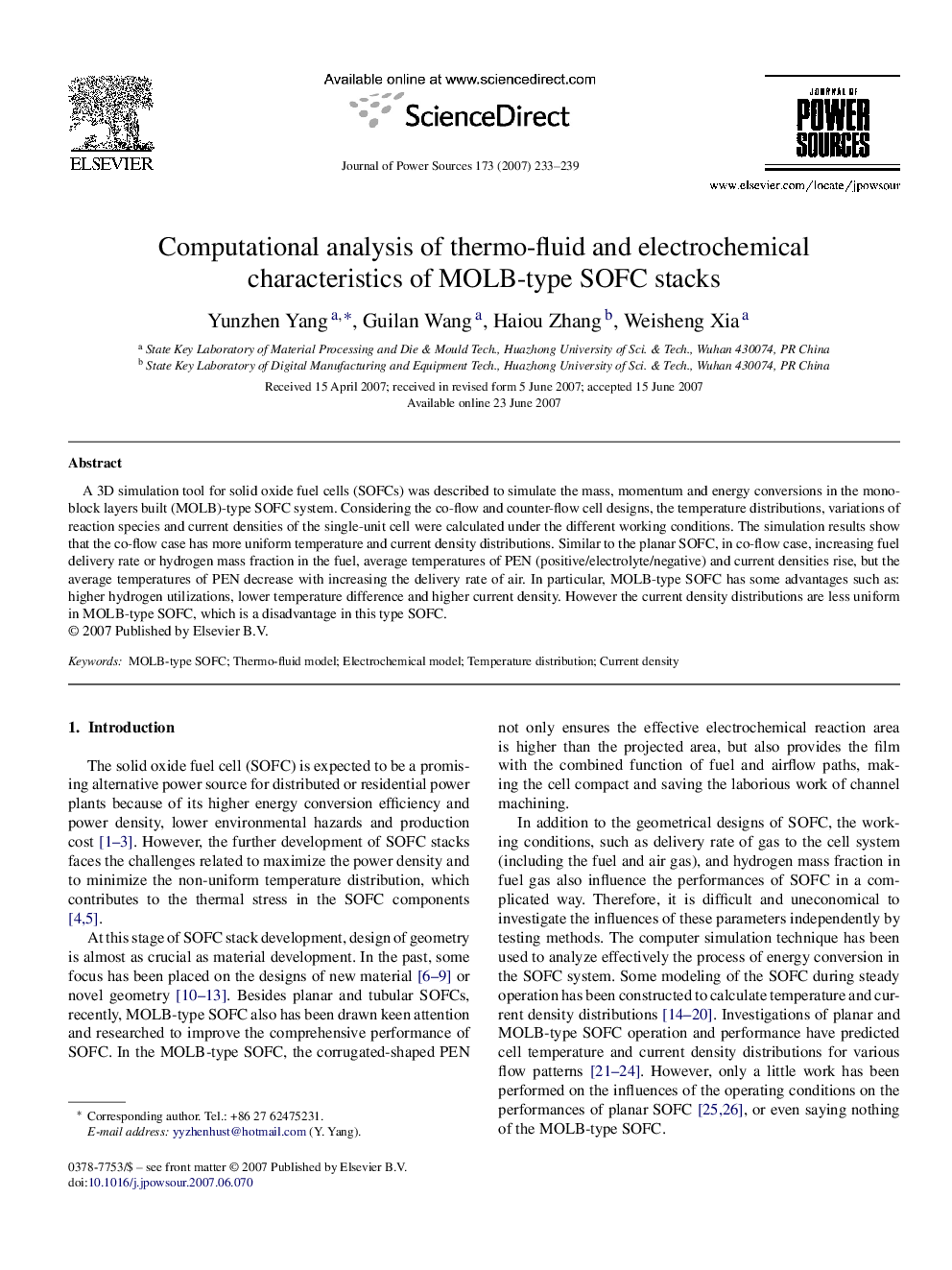| Article ID | Journal | Published Year | Pages | File Type |
|---|---|---|---|---|
| 1294891 | Journal of Power Sources | 2007 | 7 Pages |
A 3D simulation tool for solid oxide fuel cells (SOFCs) was described to simulate the mass, momentum and energy conversions in the mono-block layers built (MOLB)-type SOFC system. Considering the co-flow and counter-flow cell designs, the temperature distributions, variations of reaction species and current densities of the single-unit cell were calculated under the different working conditions. The simulation results show that the co-flow case has more uniform temperature and current density distributions. Similar to the planar SOFC, in co-flow case, increasing fuel delivery rate or hydrogen mass fraction in the fuel, average temperatures of PEN (positive/electrolyte/negative) and current densities rise, but the average temperatures of PEN decrease with increasing the delivery rate of air. In particular, MOLB-type SOFC has some advantages such as: higher hydrogen utilizations, lower temperature difference and higher current density. However the current density distributions are less uniform in MOLB-type SOFC, which is a disadvantage in this type SOFC.
